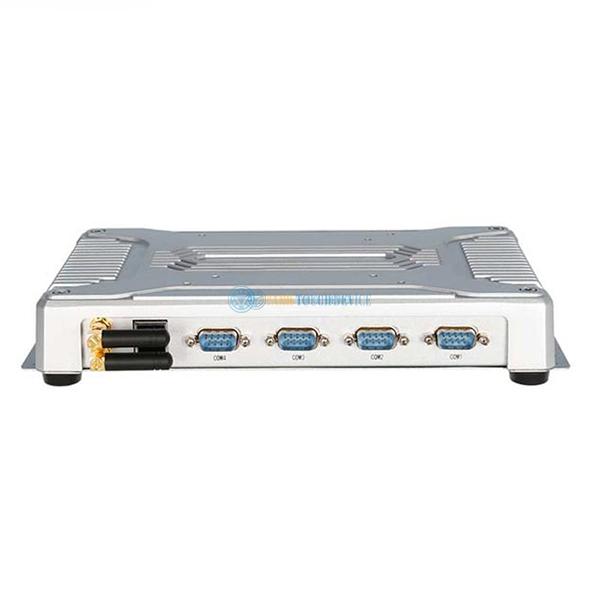Welcome STARK TOUCH DEVICE!
Solutions
Cleaning steps for dust-proof sponges in industrial control computers
Comprehensive Guide to Cleaning Dust-Proof Sponges in Industrial Control Computers
Industrial control computers rely on dust-proof sponges to protect internal components from airborne particles in harsh environments. Over time, these sponges accumulate debris, reducing their effectiveness and potentially obstructing airflow. Proper cleaning ensures optimal performance without compromising the sponge’s structural integrity.

Understanding the Role of Dust-Proof Sponges
Dust-proof sponges, typically installed around ventilation openings or cable ports, act as filters to trap fine particles while allowing airflow. In industrial settings, these sponges face constant exposure to dust, oil, and humidity, which can clog their porous structure. A dirty sponge restricts airflow, leading to overheating and reduced system reliability.
Key Contamination Sources:
Industrial Dust: Fine metallic or chemical particles from manufacturing processes.
Fibrous Debris: Textile fibers or packaging materials that adhere to the sponge surface.
Liquid Residues: Oil or coolant splashes that saturate the sponge and attract more dirt.
Step-by-Step Cleaning Process for Dust-Proof Sponges
1. Preparing for Cleaning
Before handling the sponge, power down the industrial computer and disconnect all cables. Wear anti-static gloves to prevent electrostatic discharge (ESD) during the process. Locate the sponge—it’s often found near intake fans, exhaust vents, or cable entry points. Remove the sponge carefully, noting its orientation for reassembly.
2. Initial Dust Removal
Gently tap the sponge against a clean surface or use a soft-bristled brush to dislodge loose dust. Avoid pressing too hard, as this can deform the sponge’s porous structure. For sponges with visible debris on the surface, use a can of compressed air (held at a 45-degree angle) to blow away particles without pushing them deeper into the material.
3. Deep Cleaning with Mild Detergent
For sponges with embedded dirt or oil residues, prepare a cleaning solution by mixing lukewarm water with a small amount of mild, non-abrasive detergent. Submerge the sponge in the solution and gently squeeze it to allow the liquid to penetrate the pores. Avoid scrubbing vigorously, as this can damage the sponge’s fibers.
Rinsing Process:
Rinse the sponge thoroughly under running lukewarm water until no soap residue remains.
Gently squeeze the sponge to remove excess water, but avoid wringing it tightly, which can cause tearing.
Repeat the rinsing step if necessary to ensure all detergent is removed.
Advanced Techniques for Stubborn Contamination
Using Vinegar for Odor Removal
If the sponge has developed an unpleasant odor due to prolonged exposure to dust or moisture, soak it in a solution of equal parts white vinegar and water for 30 minutes. Vinegar’s acidic properties help neutralize odors without damaging the sponge. After soaking, rinse the sponge thoroughly with water and allow it to dry completely.
Addressing Oil Stains with Baking Soda
For oil-saturated sponges, sprinkle baking soda over the affected areas and let it sit for 15–20 minutes. The baking soda absorbs excess oil and helps lift stains. Gently brush the sponge with a soft-bristled brush to remove the baking soda, then rinse with water and dry as usual.
Drying the Sponge Properly
After cleaning, place the sponge on a clean, dry towel in a well-ventilated area away from direct sunlight or heat sources. Allow it to air-dry completely—this may take 12–24 hours depending on humidity levels. Never reinstall a damp sponge, as moisture can promote mold growth or short-circuit electrical components.
Preventive Maintenance to Extend Sponge Lifespan
Regular Inspection Schedule
Incorporate sponge cleaning into your industrial computer’s monthly maintenance routine. Check for signs of wear, such as thinning or tearing, and replace the sponge if it no longer fits snugly in its housing. A loose sponge allows unfiltered air to enter the system, defeating its purpose.
Environmental Controls
Minimize dust generation in the operating area by using air purifiers or enclosing the computer in a dust-resistant cabinet. Seal cable entry points with grommets or foam pads to reduce the amount of debris reaching the sponge.
Handling During Cleaning
When reinstalling the sponge, ensure it aligns correctly with its housing and sits flush against the surrounding frame. Press gently to secure it in place without stretching the material. If the sponge has a specific orientation (e.g., a textured side facing inward), follow the manufacturer’s guidelines for proper installation.
Common Mistakes to Avoid During Sponge Cleaning
Using Harsh Chemicals: Bleach or ammonia-based cleaners can degrade the sponge’s material and reduce its lifespan.
Machine Washing or Drying: Sponges are too delicate for washing machines or dryers, which can cause irreversible damage.
Reinstalling Damp Sponges: Moisture trapped inside the computer can lead to corrosion or electrical failures.
Ignoring Wear Signs: A frayed or misshapen sponge cannot perform its filtering function effectively and should be replaced immediately.


